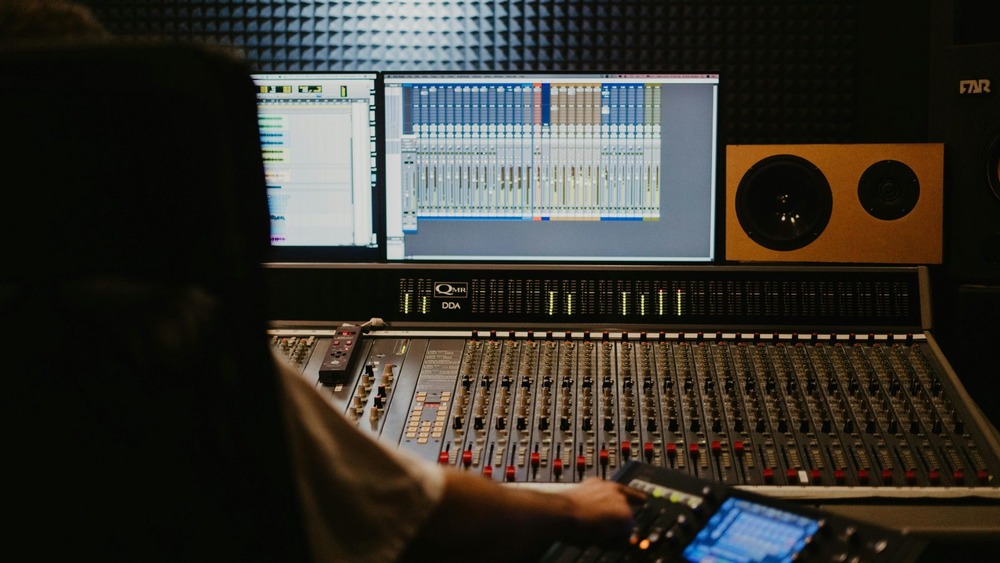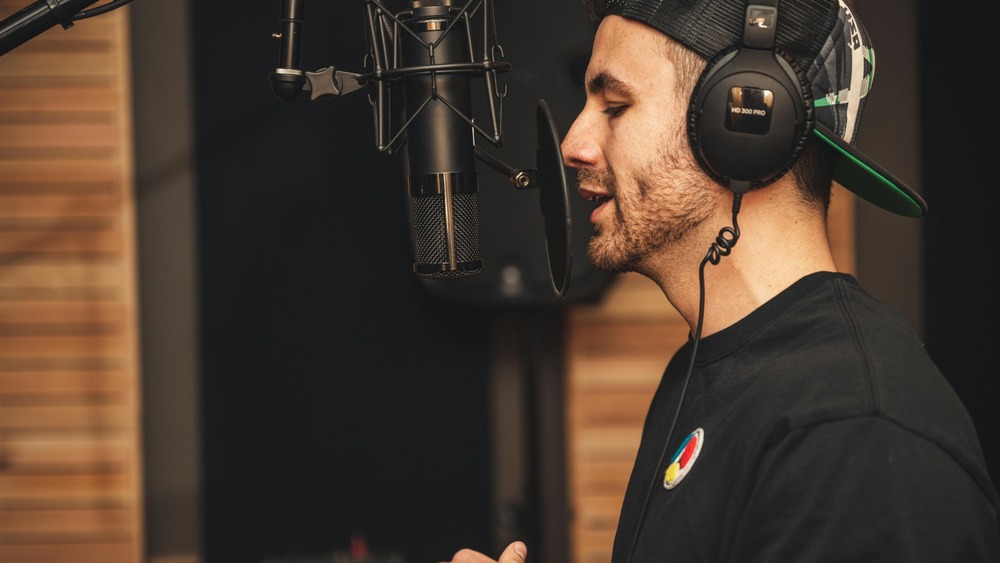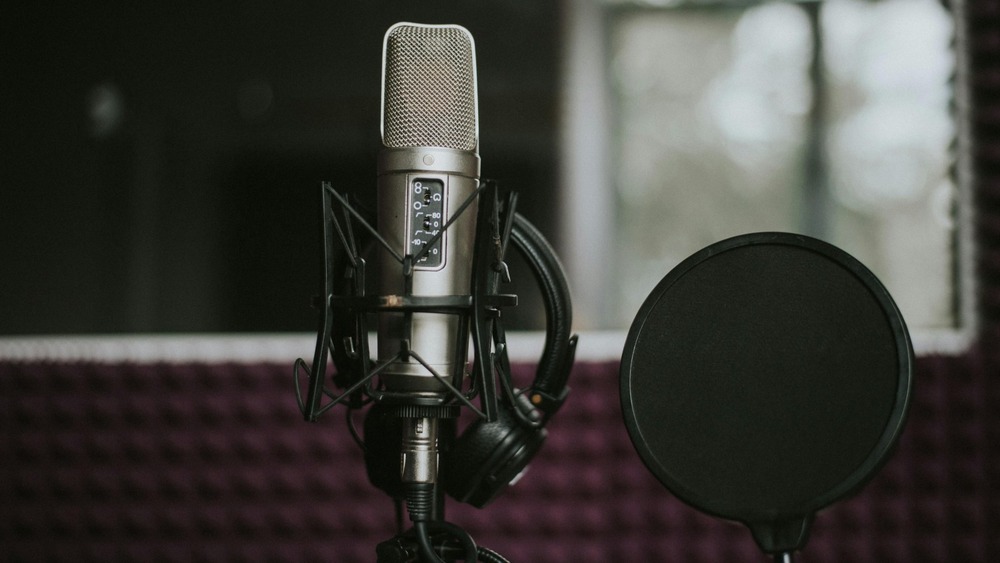
Voice-Over Production: Essential Steps for High-Quality Audio Results
If you are a regular consumer of content, be it movies, TV series, news, or even short social media videos, you might already be familiar with voice-over. Its usage is getting more and more popular, with demands coming in from various industries, from advertising to entertainment to learning materials. Voice-over plays various roles depending on how it is used, but more often, it helps with storytelling.
By definition, voice-over is a post-production process where a voice is recorded for an off-screen use. Voice-over, or often shortened as VO, can come in many different forms, such as narration in a movie, a phone call, or advertisements. To achieve high-quality voice-over, voice-over artists are skilled in intonation, emphasis, reading speed, and different voices to use depending on the context. Voice-overs in a horror movie trailer would sound darker and mysterious compared to voice-overs in kids’ toy advertisements.
This article will take you through all the essential steps for high-quality voice-over results, from planning to recording techniques and quality control.
Voice-Over vs. Dubbing

Before diving into the process of voice-over production, it is important to know what voice-over actually entails. Voice-over and dubbing are similar, but they have different goals. While both are post-production processes to record voices, dubbing aims to substitute the original voices in audiovisual media. In other words, dubbing is like subtitles, but spoken.
For example, the popular Netflix original show Squid Game was originally made using the Korean language and is dubbed in many languages. Both voice-over and dubbing share similar traits, such as which words to stress, intonation changes, and voice adjustments depending on the context.
Voice-Over Production

There are slight differences in the voice-over production for every agency. However, the general outline follows pre-production, production, and post-production. The entire process includes scripting during the pre-production, recording during the production, and editing in the post-production. There are key points to ensure the outcome is satisfactory, and this article will go through each step.
Pre-Production
Similar to any pre-production process in other media forms, the pre-production stage of a voice-over production includes casting and scripting. The main goal of the pre-production stage is to plan as effectively as possible and get every element needed for production ready.
A good voice-over output starts with a good script; hence, having a clear, engaging, and targeted script is crucial in ensuring the output is top-notch. Not only should it include the wording, but any instructions and directions for the voice talents should be included. Target audience, tone, and pacing, among others, should be clearly stated so that the voice talents have something to work with. Though it is important to note that creative freedom for the voice talents should also be balanced, provide directions, not rules.
Coming off that, a killer script can fall flat without a good voice talent. A good voice talent should know how to pace, set the tone, and match the style to the project’s goal. A good script combined with a good voice talent ensures the delivery is in accordance with what is intended. For example, a voice-over script targeting young adults for a makeup brand would use a tone that matches the brand’s image, such as using fun and trendy phrases to make it more personal. A good voice talent who understands this can match their tone and style.
Production
Once the script and voice talent are ready, it is time to record. Before the recording starts, setting up the recording studio is an important step. A proper microphone, a recording space that is quiet and soundproof, headphones, filters, and other recording equipment should all be set up and ready to use by audio engineers. They make sure everything is up to standards to deliver the best audio outcome, and this includes audio mixing, equalizing, and mic placement during the production process.
The aim during the production process is to have clear and consistent voice recordings that match the intention and tone of the project. Proper pacing, articulation, and tone are the main things to look out for during recording, outside of the technical aspects. It is not rare to record multiple takes and listen to them in real-time to find out what needs to be altered. This allows the voice talent and audio engineer to experiment with different styles until they land on the best one for the project.
Post-Production
After the recording step comes the post-production, which includes audio editing and mastering. In this step, the sound designer goes over all recordings and pieces them together, while also cleaning up the audio, such as removing breaths, unnecessary noises, such as background noises, and pauses. There is a handful of technical expertise needed for the post-production part, such as the use of EQ and compression, volume levelling, among others.
Once the original recordings are all cleaned up, the next step is to add music or sound effects, depending on each project. Then, similar to the previous steps, come the final checks. This includes everything from audio cleaning and volume leveling, which is a crucial part to nail because uneven audio levels can really ruin the immersive aspect of the end result.
Other than reviewing the technical aspects, listening to the overall project from start to finish must also be done in the quality control stage. Keeping an eye (or an ear) out for pacing and tone consistency is a no-brainer when it comes to the post-production stage. By doing that, more imperfections might be found, which can be fixed immediately before sending the finished product to clients for review.
Digital Audio Workstation (DAW)

DAW is a software that every audio recording project uses. It is a place where all recording, editing, mixing, and mastering happen. There is a wide range of DAWs, from free to paid, from beginner-friendly to advanced ones. Below is a list of several DAWs widely used in the voice-over production industry.
Audacity
The free and beginner-friendly software has enough features that allow for a simple and quite refined audio mixing and editing. Its interface is easy to master, and can be a great first step into the world of digital audio workstations. The software is already rich in features and plugins, such as audio analysis, and allows various file types from MP3 to WAV, file type conversion, and plenty more.
ProTools
This tool is an industry classic – from music creation to voice-over production, the software has it all. It is enriched with a ton of useful plugins, instruments, and sound libraries, all targeted to make any audio production effective and impactful. Many professionals find its features and plugins worth the money spent for the annual subscription this tool requires.
Adobe Audition
If you are already familiar with the Adobe Creative Cloud interface, Adobe Audition will not be such a learning curve for you. A major plus that professionals see in this software is its integration with other Adobe apps, such as Premiere Pro and even After Effects. Its audio recording, mixing, and mastering features are also top-notch. It is quite simple for beginners to navigate, making it a good software if you want to step up from simpler and free software.
Davinci Resolve (Fairlight)
Unlike Adobe Audition, Davinci Resolve has its professional digital audio workstation integrated within the video editing software. The audio section is called Fairlight, and it is just as rich in audio mixing and mastering features as it is in plugins. Though there is a version of the software that requires you to pay, Davinci Resolve also offers a free version with just enough features to create high-quality audio (and video). The software has been getting more popular among audio engineers within the last several years due to its simplicity and effectiveness.
Ableton Live
Another industry favorite, Ableton Live, is best known for its range from real-time electronic music composition to scoring films in a studio. The features are designed to fit all of their users’ needs, making it a diverse and effective tool. From recording to editing to mastering, the software covers all steps of audio production, whether it is music, film scoring, or voice-over production.
Reaper
This emerging DAW has become more popular in the past few years. Its users are diverse, from beginners working from home to industry professionals working for big studios. Many of its loyal users stay with the software due to its customizable interface, comprehensive features, and affordable price. Some say that it takes some learning when you first start out with this software. However, once you get the hang of it, you will see that the software is super powerful and effective.
Conclusion
Voice-over production involves both creative and technical expertise, and it is crucial to be familiar with its step-by-step process as well as the tools to achieve high-quality results. While having the right and proper gear is important, working with what is available to you is a great place to start. The more you do it, the more you learn, and then you can start upgrading from there.
Working with experienced agencies or studios for voice-over production is an option that is always nice to have. They have all the tools and professionals who ensure the process is as smooth and effective as possible, with the goal of delivering high-quality results in mind. Digital Trans Asia is one of the best-experienced voice-over localization companies, with a long portfolio in the creative industry localization, including voice-over. Let’s get talking!
Ready to enhance your voice-over production with expert services? Visit https://digital-trans.asia/ to learn more about our offerings. Contact us today to get started!